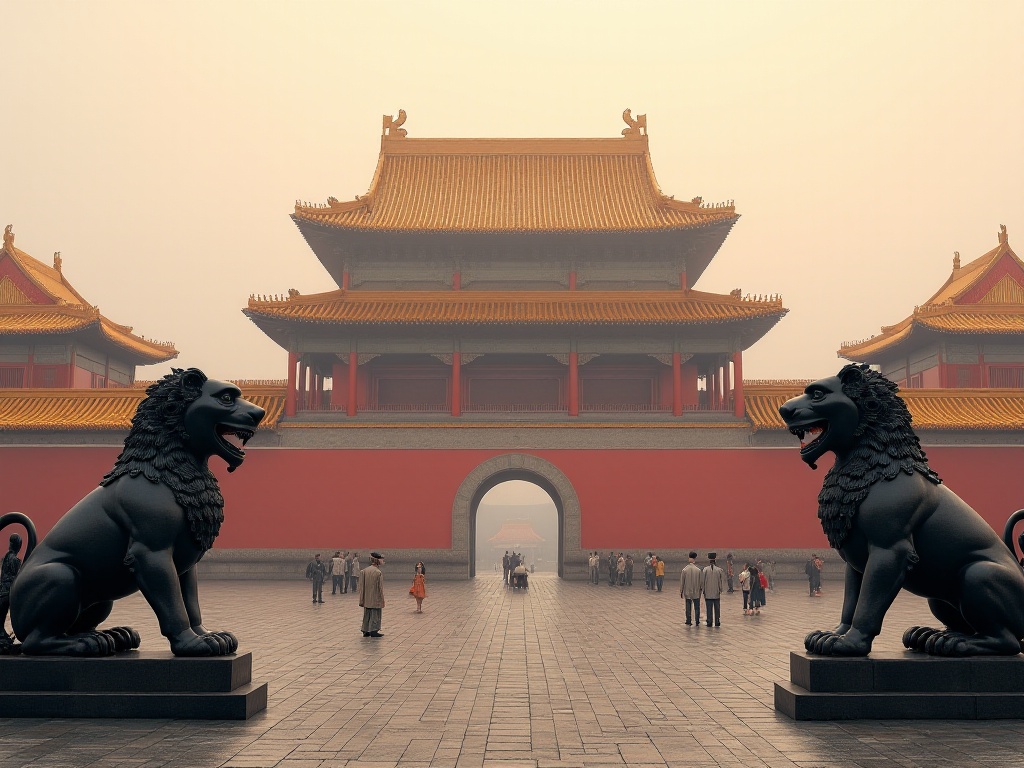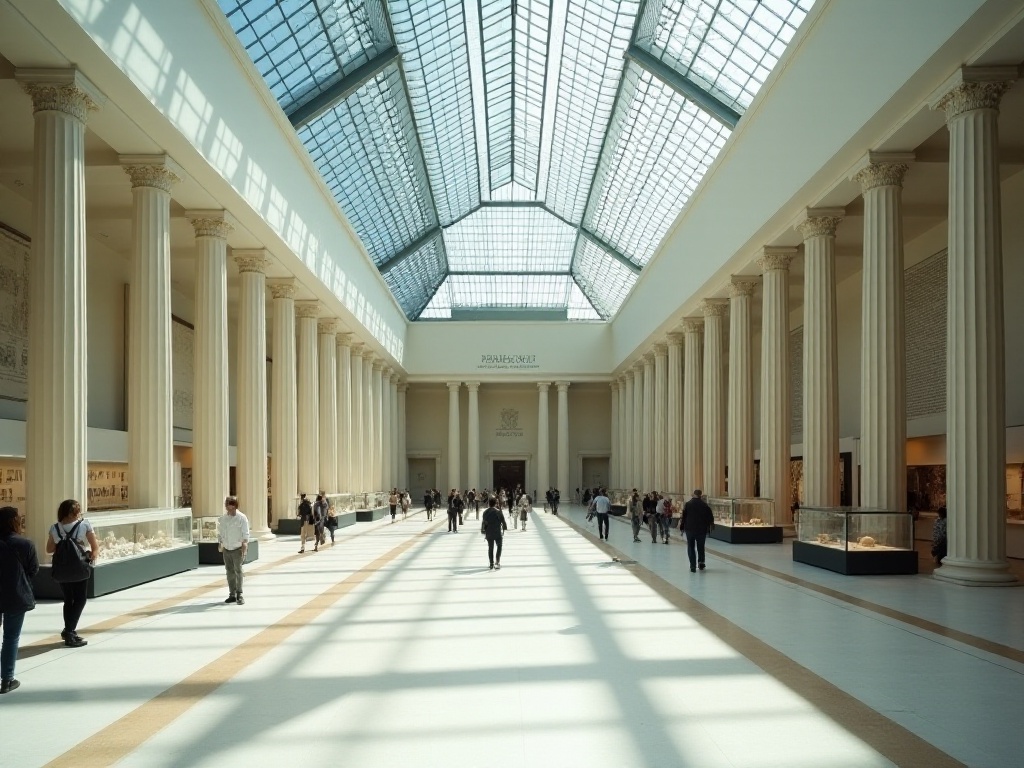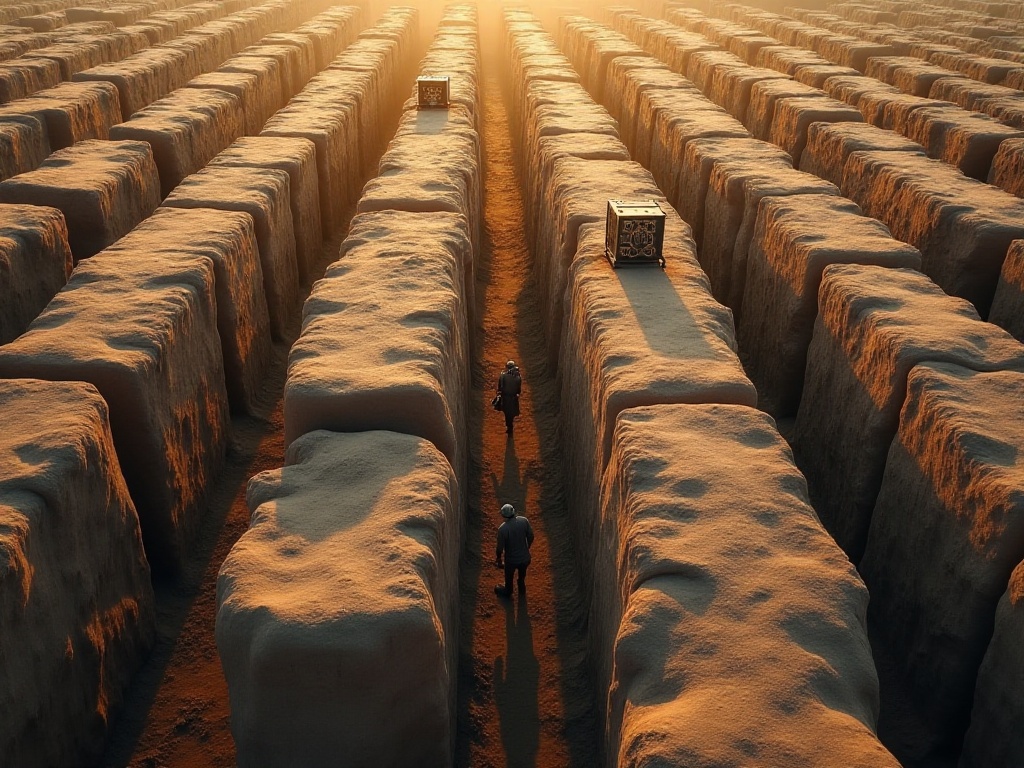Opening
Imagine how cool it would be if we had a time machine that could take us to every important moment in human civilization! Actually, this seemingly impossible dream can be realized in museums. As an enthusiast of in-depth cultural tours, I've visited museums around the world, and today I'll take you to experience the charm of these "time machines."
National Treasures in the Forbidden City
The Palace Museum is truly an enormous treasure house. Built in 1925, this museum covers an area equivalent to 100 football fields, and it takes several days just to walk through all the exhibition halls. Most impressive is its collection of over 1.8 million artifacts, from bronze ware to porcelain, from paintings and calligraphy to jewelry, each piece a priceless treasure.
I remember being captivated by the exquisite architectural details when I first entered the Forbidden City. The painted decorations on the flying eaves and upturned corners, the glazed roof tiles, and the lifelike stone carvings all testify to the wisdom of the ancients. Especially when the afternoon sun shines obliquely on the golden glazed tiles, the entire Forbidden City seems to be bathed in a golden halo.
Among the many exhibits, a cloisonné enamel vase with floral patterns from the Qianlong period left a particularly deep impression on me. This vase is entirely decorated with cloisonné enamel technique, with gold wire patterns as fine as hair, and every flower and leaf appears lifelike. The enamel colors are brilliant and dazzling, shimmering with enchanting luster under the lights. Standing before the display case, I carefully examined those details with a magnifying glass, hardly believing it was man-made.
Many young people nowadays are pursuing national trend cultural creations, and many design inspirations actually come from these traditional crafts. For example, many jewelry designs with Oriental aesthetics are inspired by cloisonné enamel techniques. And isn't the palace-style makeup trending all over the internet inspired by the architectural colors of the Forbidden City?

The British Museum's Collection
Speaking of the British Museum, it's truly a place where one loses track of time. This museum, established in 1753, actually developed from the private collection of a collector named Hans Sloane. Just think about it - one person's collecting hobby developed into a world-class museum, a story more fascinating than a movie.
The number of collections in the British Museum is astounding, exceeding 8 million pieces! If you wanted to see all the exhibits, spending just one minute on each piece, viewing non-stop without eating, drinking, or resting, it would probably take 15 years. The museum houses precious artifacts from around the world, from majestic Egyptian pharaoh statues to exquisite Chinese porcelain, from mysterious Mayan civilization relics to delicate Japanese ukiyo-e prints - it's practically a complete history of human civilization.
My favorite sections are the Egyptian and Asian galleries. In the Egyptian gallery, you can closely observe those mysterious mummies and learn how advanced ancient Egyptian embalming techniques were. The paintings on those exquisite sarcophagi remain as vivid as new after thousands of years, making one admire the craftsmanship of ancient Egyptian artisans.
In the Asian gallery, what attracts me most are the Dunhuang murals and Mogao Caves replicas. Although they are replicas, those exquisite Buddha statues and flying apsara figures still allow one to experience the cultural grandeur of the Tang Dynasty. Whenever I see these, I wonder if Zhang Qian saw such stunning scenes when he traveled to the Western Regions.

The National Museum of China's Splendor
As China's cultural landmark, the National Museum of China is truly a place of pride. Located on the east side of Tiananmen Square, this museum is not only the largest in Asia but also one of the largest exhibition spaces in the world. Its architectural style is both dignified and modern, perfectly interpreting the fusion of Chinese traditional culture and modern civilization.
The museum's exhibition system is very scientific, with basic displays showing the development of Chinese civilization, while various special exhibitions allow visitors to understand Chinese history from different perspectives. I particularly appreciate their philosophy of "not seeking to collect everything, but seeking to exhibit." This open and cooperative attitude gives visitors the opportunity to see precious artifacts from around the world.
When I visited the National Museum last year, I happened to catch a special exhibition on bronze ware. The exhibition hall displayed bronze vessels from various periods, from ritual vessels of the Shang and Zhou dynasties to practical utensils of the Qin and Han dynasties, providing deep insight into the development of Chinese bronze civilization. The patterns on these uniquely shaped bronze vessels, some solemn and elegant, others lively and vivid, show ancient people's different interpretations of beauty.
Most striking was a Square Zun Vessel with Four Rams from the Shang Dynasty. This bronze vessel stands 53.8 centimeters tall and weighs 34.75 kilograms, with ram patterns cast on all four sides, creating an imposing appearance. According to experts, the casting technology for such large bronze ware would be quite complex even by today's standards, requiring multiple processes and precise temperature control. This made me marvel at how ancient people three thousand years ago had already achieved such a high level in bronze manufacturing.

Archaeological Wonders
Speaking of archaeological discoveries, the Terracotta Warriors of Emperor Qin Shi Huang is definitely one of the most stunning. When I first stood before the terracotta pit, I was amazed by the scene before me. In Pit 1, over 8,000 clay warriors stand in formation, creating an imposing sight. Each warrior has different facial expressions, clothing, and hairstyles, with even finger joints carved in great detail.
Most amazingly, these terracotta warriors were originally colored. Although most of what we see now are grey clay figures, through technological means we can see they were originally painted. Imagine what an impressive sight this massive army of clay warriors must have been 2,000 years ago, adorned with bright colors gleaming in the sunlight.
At the Cairo Museum in Egypt, Tutankhamun's golden death mask represents another kind of archaeological wonder. This mask is made of pure gold, weighing 11 kilograms, and inlaid with lapis lazuli, turquoise, and other precious stones. The craftsmanship of the mask is extremely exquisite, with the pharaoh's features carved lifelike, and the stripes and patterns on the headdress meticulously detailed.
Most amazingly, this mask wasn't discovered until 1922. For over 3,000 years, it lay quietly in Tutankhamun's tomb, waiting for the moment of rediscovery. Every time I see this mask, I imagine how archaeologist Howard Carter must have felt when he opened the tomb - the excitement of discovering such a historical treasure must have been overwhelming.

Open-Air Museums
If indoor museums let you view history through glass cases, open-air museums let you walk directly into history. The Acropolis Museum and Roman Forum are such places, perfectly integrating ancient ruins with modern cities.
At the Acropolis, the ruins of the Parthenon are awe-inspiring. Although the temple is incomplete, those Doric columns still stand tall, telling the story of ancient Greek civilization's glory. Especially at sunset, when golden sunlight bathes the ancient marble, the entire site is enveloped in a sacred glow.
Sitting on the steps of the Acropolis, looking at modern Athens in the distance, one can almost see the scene from over two thousand years ago: Athenians in robes gathering here, philosophers discussing truth, artists creating sculptures. This fusion of ancient and modern is something indoor museums can't provide.
At the Roman Forum, one can feel the majestic spirit of the ancient Roman Empire even more. Among those ruins, one can still glimpse the splendor of the past. The layout of the ancient Roman Forum, in particular, demonstrates the Romans' superior wisdom in urban planning. Every column, every stone slab seems to tell an ancient story.

Conclusion
After visiting these museums, I deeply realize that museums are not just places to collect artifacts, but bridges connecting the past and present. Through these exquisite artifacts, we can understand the wisdom of our ancestors, experience the charm of different civilizations, and contemplate the development trajectory of human civilization.
Each artifact is a witness to its era, and each museum is a three-dimensional history book. When we walk through these exhibition halls and appreciate these artifacts, we are actually dialoguing with history and communicating with our ancestors. This conversation across time and space helps us better understand the past and see the future more clearly.
Which museum would you most like to visit? Or have you already been to some of these museums? Feel free to share your museum stories in the comments.


